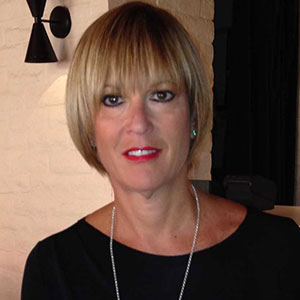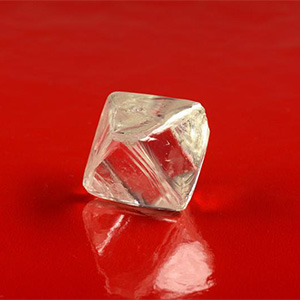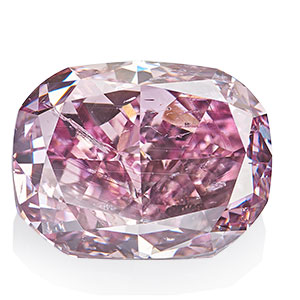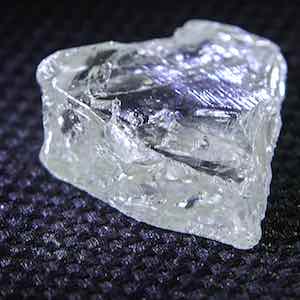
Russian diamond miner Alrosa plans to amp up its U.S. sales and marketing efforts over the next year, says Rebecca Foerster (pictured), the industry veteran who became Alrosa USA president in January.
“There is still a lot of opportunity to generate more awareness about Alrosa,” Foerster tells JCK. “The timing is perfect because the company is so well-positioned to talk about mine of origin, mine-to-market, how everything is traceable. The stories behind that are very relevant to what we feel is an important differentiator for mined diamonds.”
Even though Alrosa is the world’s largest diamond producer by volume, most of the U.S. industry doesn’t know much about it, Foerster feels—and she considers that a good thing. “It’s always harder when there is an existing perception and you have to change that.”
For the last few years, Alrosa’s 47th Street office has been quiet. But this year is shaping up as a busy one. In 2018, it held two rough and one polished tenders; this year, it will hold four rough auctions and one polished sale. (Alrosa has a large polishing division and plans to purchase Russian cutter Kristall.)

But Foerster, a marketer by training, is also interested in launching brands and programs that use Alrosa’s output.
“The objective is to create strategic partnerships. It could be anything from a retailer coming to us with a great idea to identifying certain diamonds and areas where we think there are interesting stories to tell. There are some major initiatives in place that I can’t talk about right now but will soon be announced. This is all new, but there is a major commitment to it.”
She notes that Russia is a significant producer of colored diamonds, which will become more important with Australia’s Argyle mine slated to close next year.
“There will always be the Argyle pinks. But some of the stones that I have seen [from Alrosa] are equally beautiful. And we don’t just have pinks. We have an assortment of colors that no one has ever seen before in terms of colors and size. So, yes, there will soon be a void in the market for the collectors and whatnot, and I think there is an opportunity for us.”

One thing that Alrosa does not plan to do, she stresses, is start an Alrosa brand.
“The idea is that Alrosa will always be the ‘Intel Inside,’ the story behind,” she says.
Of course, not everyone looks too favorably on the stories coming out of Russia these days. Vladimir Putin’s regime has been accused of fomenting division and interfering in elections in the United States and elsewhere. While the Russian government owns one-third of the company, Foerster doesn’t see that as a problem.
“When people look at diamonds, they look at them as a luxury good. They don’t think about politics at all. It’s the same as Russian vodka or caviar, it’s known for quality. Russian rough is some of the best rough that has ever been in the industry. In talking to retailers, in talking to manufacturers that we want to create these programs with, I don’t see it. There are so many amazing give-back stories. We do 500 charities. We have the largest percent of revenues that go to charities than any other diamond mining companies.”
There is also the specter of U.S. sanctions against Russian government–connected entities. Foerster notes that Alrosa has never been sanctioned and doesn’t expect to be. But if it is, it will be prepared.
And, of course, there’s lab-grown, the hot topic of the moment. Alrosa is a major producer of small diamonds, and that sector is often considered most vulnerable to created competitors.
“The way I look at is, challenge is opportunity,” Foerster says. “There are choices in every category. So instead of us worrying about lab-grown, let’s become more vocal and more confident about the inherent value of mined diamonds, and let’s start telling these stories to the consumer, so when they’re making a choice, they are making it based on valid information. I’m not sure how much consumers know about the journey of a diamond from the mines, or all the communities that have been uplifted, or how many people who would not have livelihoods without the diamond industry, whether in Yakutia or Botswana. We talk a lot to ourselves, but I’m not sure we do a great job of talking to consumers.”
One thing that Alrosa has become slightly more vocal about: the “unusual” diamonds sometimes found at its mines. Around Valentine’s Day, it sent out a release on the heart-shape rough found in Yakutia. It’s the kind of quirky story that depends on the vagaries of nature—and one only a miner could tell.
“There is a collection of those unusual stones in Moscow,” says Foerster. “There is a woman who is in charge of the unique diamonds. And when you go in, there is the [diamond that looks like a] soccer ball, there is the skull, there are so many interesting things.”

(Images courtesy of Alrosa)
- Subscribe to the JCK News Daily
- Subscribe to the JCK Special Report
- Follow JCK on Instagram: @jckmagazine
- Follow JCK on X: @jckmagazine
- Follow JCK on Facebook: @jckmagazine